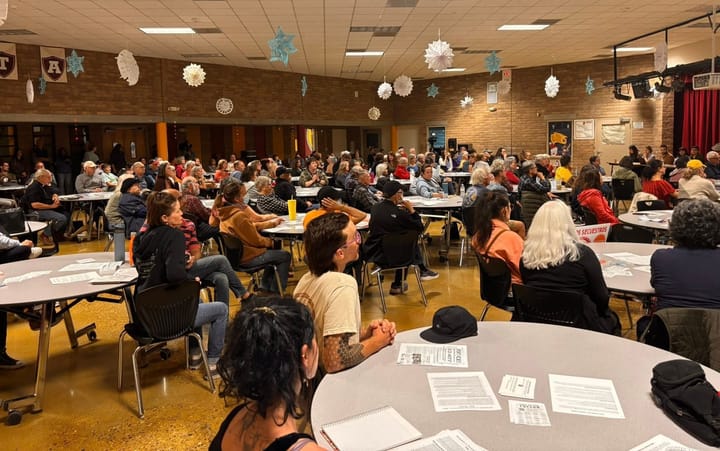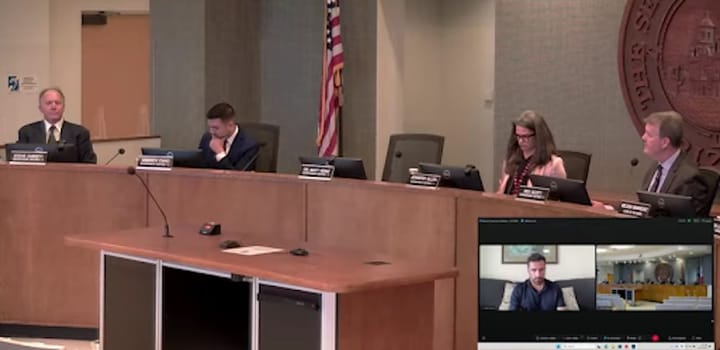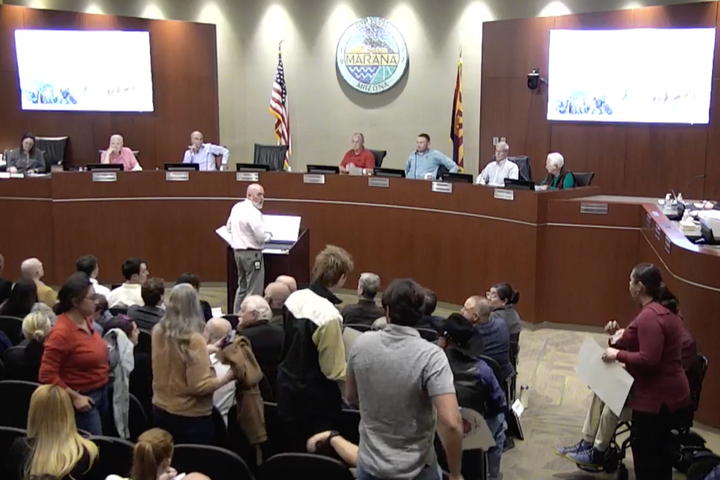Tucson residents divided over data center at community meeting
At a heated community meeting, Tucson residents clashed over Project Blue, a proposed data center that raised concerns about water use, environmental impact, and transparency.
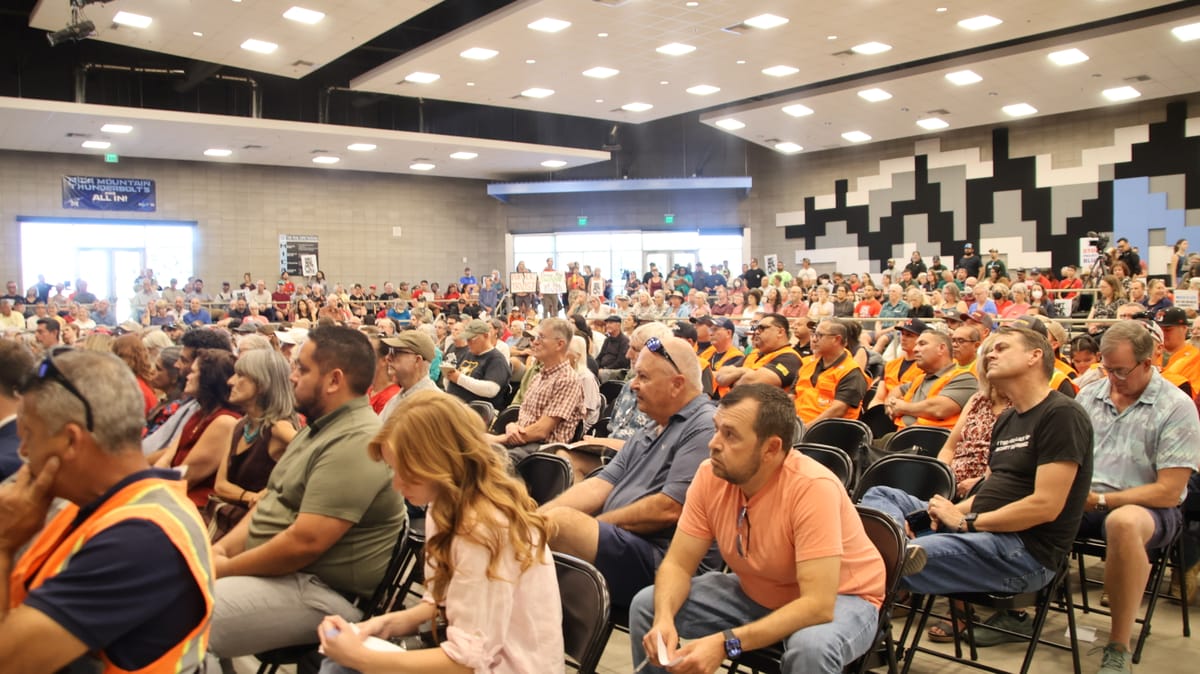
Hundreds of Tucson residents packed Mica Mountain High School on Wednesday night, clashing over Project Blue, a proposed Amazon-backed data center that could use up to five million gallons of water per day.
Hosted by Tucson City Councilwoman Nikki Lee, whose ward will be home to the project, the informational meeting followed the Pima County Board of Supervisors’ June 17 approval of the sale of 290 acres of land.
It also came days after the Arizona Luminaria published a story tying Amazon Web Services to the project, which had been veiled in secrecy.
“Beale Infrastructure develops data centers and it really works with communities across the country to build infrastructure that helps with economic development,” said Keri Silvyn, a partner at the firm Lazarus and Silvyn and representative of Project Blue.
Silvyn said Tucson is an ideal site for a data center because of its large population, skilled workforce, low risk of natural disasters, strong water management and reliable power access.
“This really is an opportunity for a large industry leader to work with TEP on future phases that accelerate that energy conversion and transition,” she said.
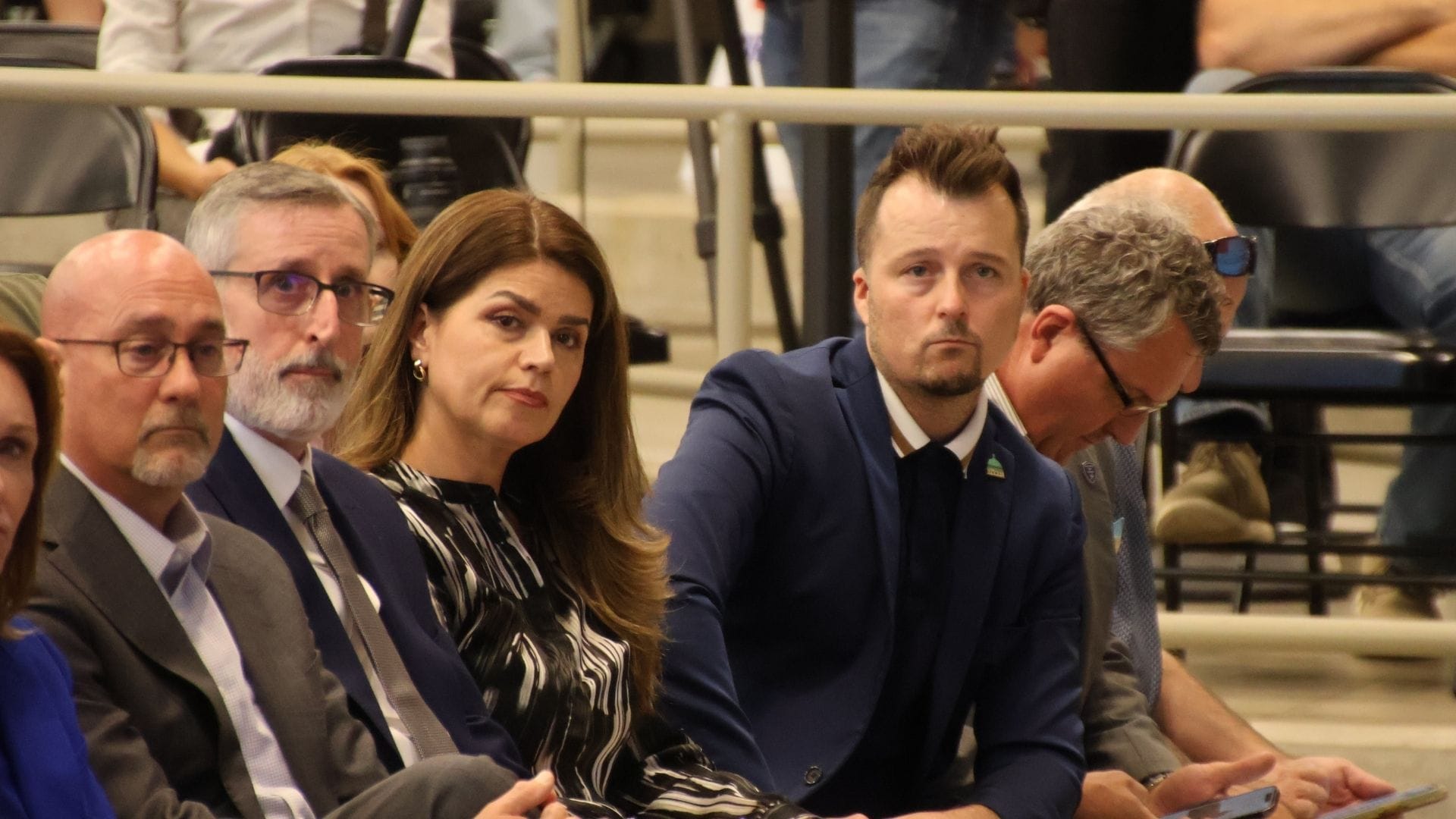
Dressed in red, members and supporters of the No Desert Data Center Coalition held up signs calling Beale Infrastructure “vampires” and shouted “Liar!” “Shame!” and “Tell the truth!” after each statement presented.
“I was outraged by the (Pima County Board of Supervisors’) 3 to 2 vote to approve the sale,” said Eliseo Gomez, a science teacher and member of the coalition.
He said the No Desert Data Center Coalition formed after a June meeting on the data center, held with the board and the Tucson Birthplace Open Space Coalition. Since then, the group has been handing out flyers and running a social media campaign to fight Project Blue.
“I hope my students don’t lose their favorite field trip, which is going out to the Santa Cruz River,” said Gomez.
One of the coalition’s main concerns is the center’s proposed water use. During the public meeting, an angry resident shouted, “Show respect for the water!”
Silvyn said the project plans to be net positive, meaning the group will replenish “100% of the water used.” The center plans to build an 18-mile reclaimed water pipeline across 30 acres, constructed alongside the initial phase of the project, she said.
While Tucson City Manager Tim Thomure said the data center will not use water from the Santa Cruz River or Sweetwater Wetlands, an article by Arizona Daily Star reporter Tony Davis suggests otherwise. Davis spoke with University of Arizona Professor Michael Bogan, who said that allowing Project Blue to use reclaimed water would likely dry up several miles of the Santa Cruz River in the Marana area.
“The only source of reclaimed water that is currently ‘free’ and wouldn’t cause a net deficit in our groundwater supply is that which is flowing from the Tres Rios Water Reclamation Facility into the Santa Cruz River,” Bogan wrote in a memo to Tucson Mayor Regina Romero.
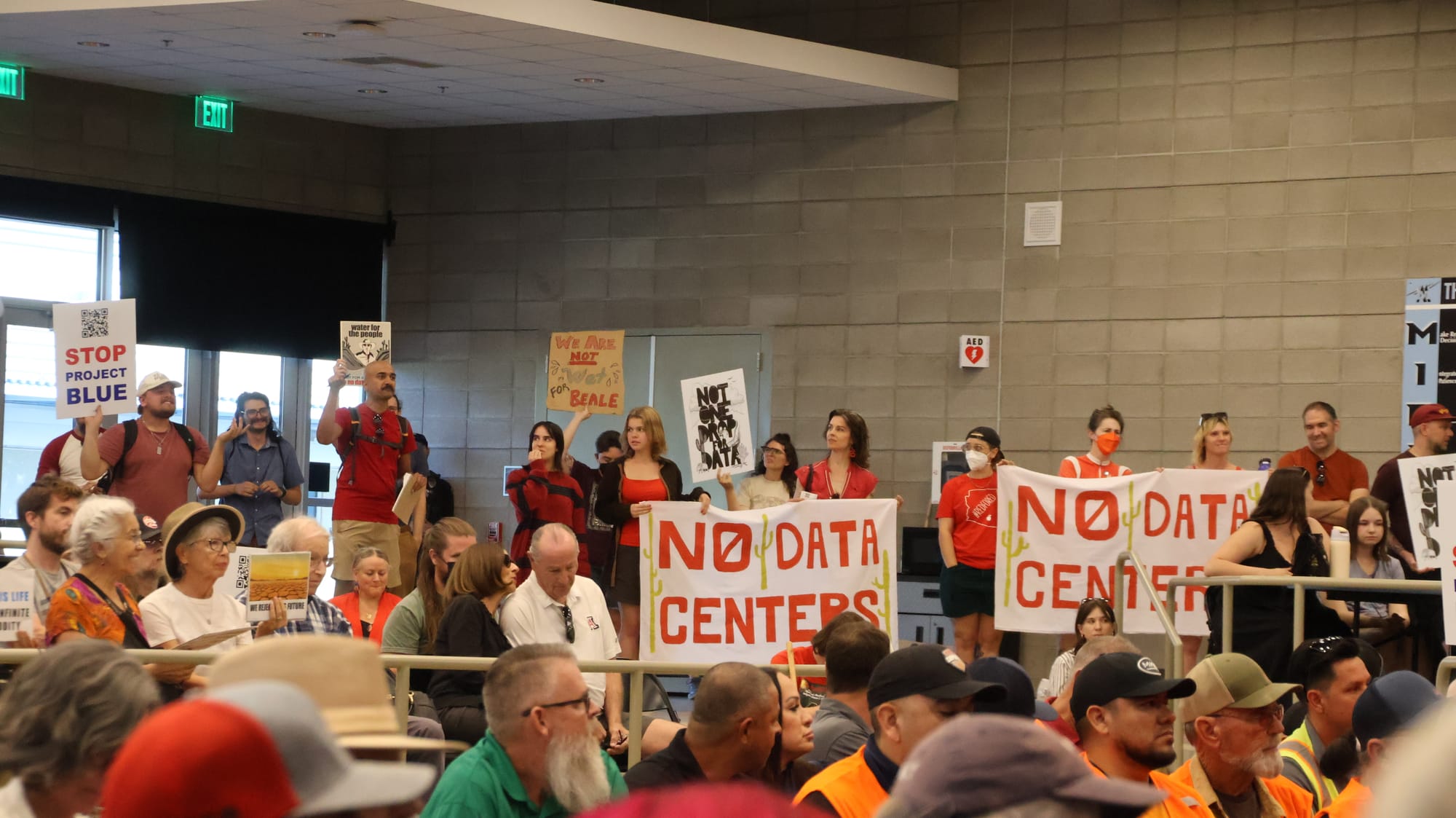
Bogan is an assistant professor at the University of Arizona’s School of Natural Resources and Environment. His work focuses on assessing the ecological benefits of using treated effluent to restore flow in urban rivers that lacked biodiversity.
He said the only “new water resources” Project Blue could potentially use are additional allocations of Central Arizona Project water, tribally owned water or a hypothetical future source of desalinated water.
“None of these sources are likely to be viable, and if Project Blue has a plan to access them, they should state that publicly,” Bogan said.
Other potential sources of water for Project Blue include the Southeast Houghton Area Recharge Facility and the Tucson Airport Remediation Plant.
Many residents also voiced concerns about contamination or toxic chemicals that could be found in the reclaimed water.
Project Blue must comply with the Arizona Department of Environmental Quality’s aquifer protection permit, said Christina Casler, director of water for Beale Infrastructure.
“Nothing can be put into the aquifer without complying with this permit and we are already working very closely to comply with this,” Casler said.
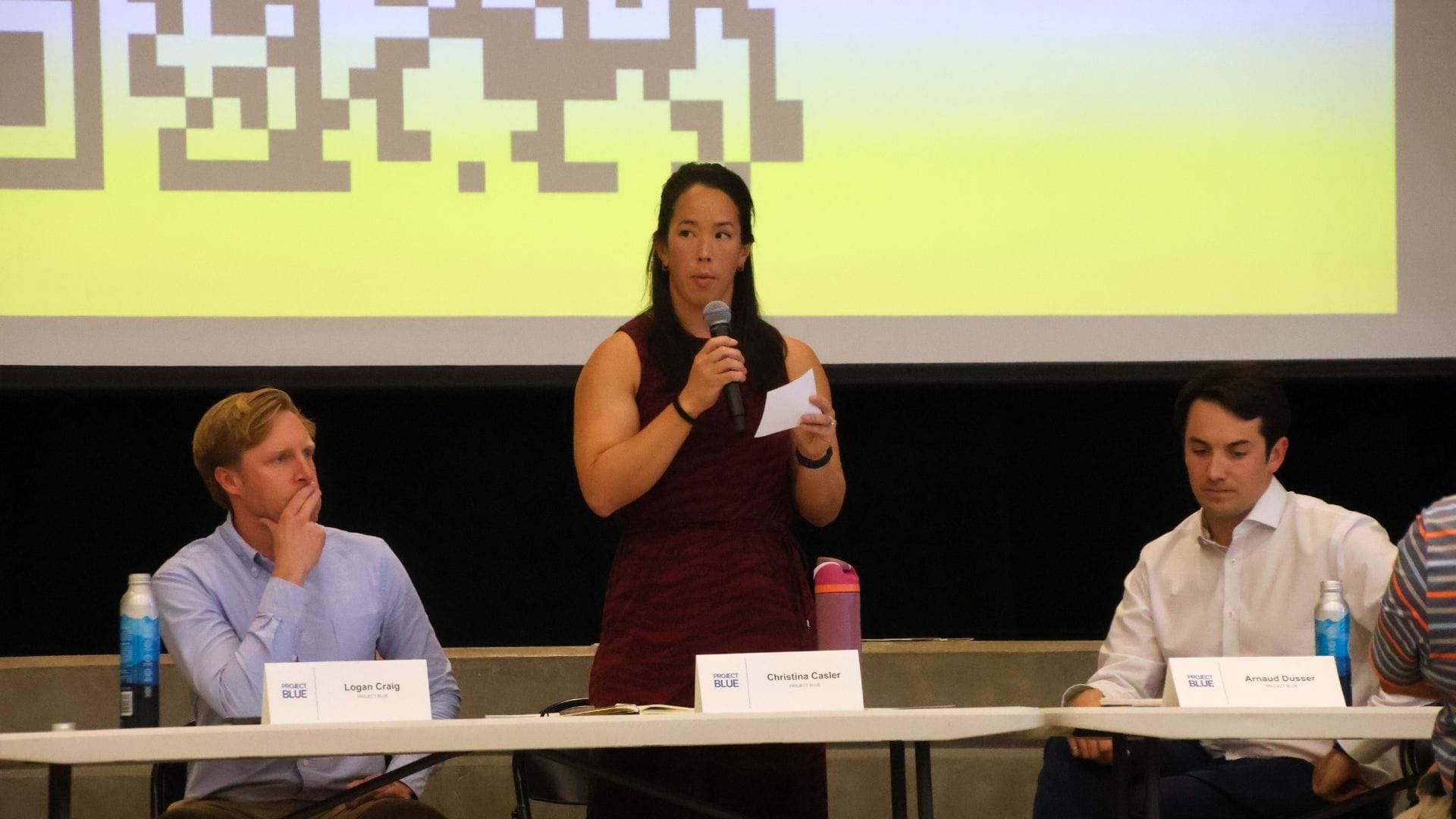
She said Project Blue will not add any toxic chemicals, odors or heavy metals to the water and will remove hard calcium and magnesium and provide a non-oxidizing biocide to prevent growth.
“Data centers in the past have made mistakes,” she said. “We are working very closely with Tucson Water to model the effects of this water usage.”
Despite widespread concerns about the data center, the initial phase of Project Blue is expected to create up to 3,000 construction jobs over seven to 10 years.
“Hopefully (the city council approves) it, so we can start putting our members to work,” said Sean Lopez, a member of LiUNA Local No. 1184, a labor union in Southern Arizona.
He said labor unions provide benefits for families, including pensions, retirement plans and 401(k) options.
“We try to give construction workers that corporate lifestyle where they can actually retire and have (paid time off),” he said.
Lopez said that when construction projects face public controversy, labor unions generally receive more support than opposition.
“The people that live here want to work on this job,” he said.
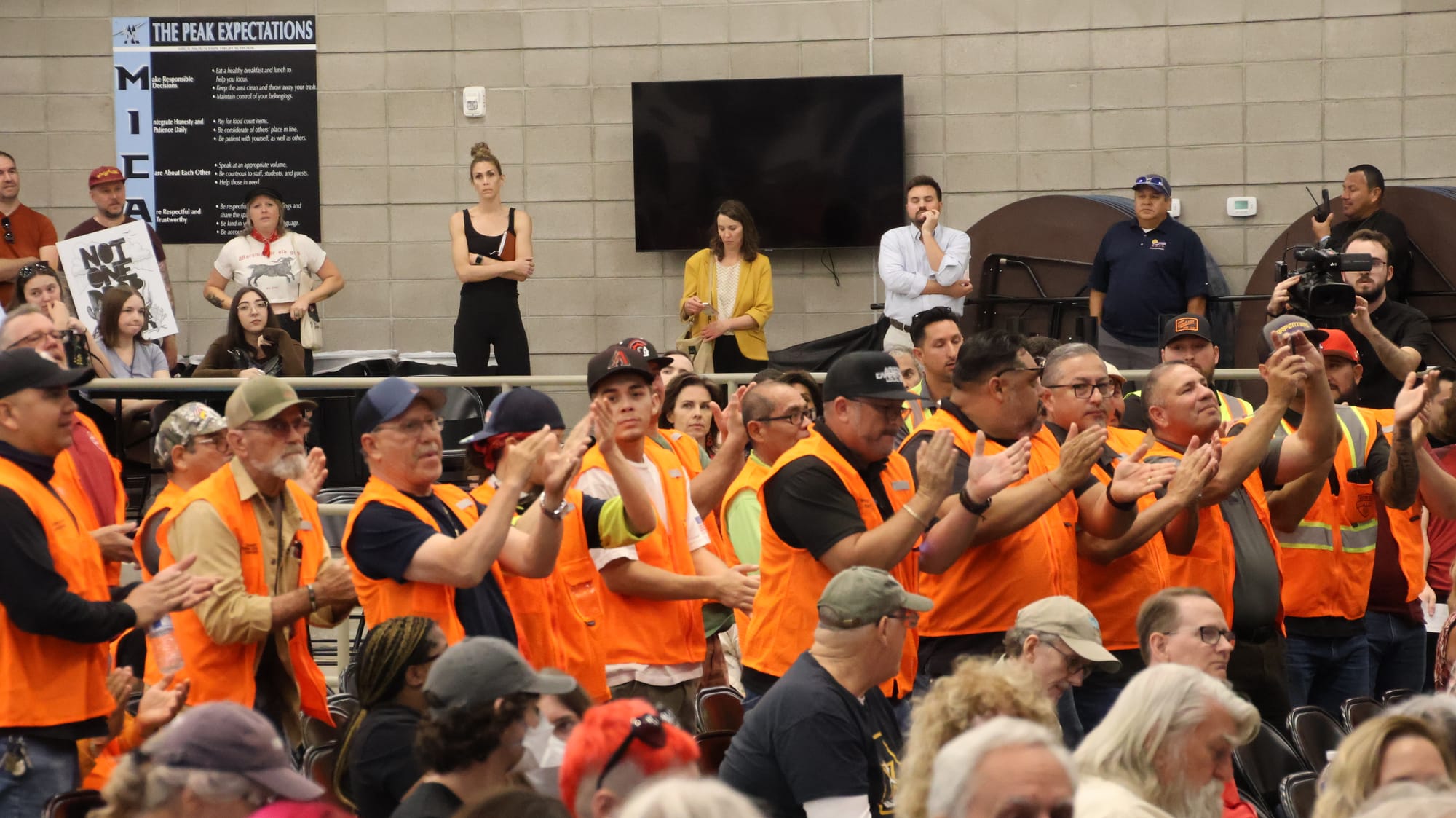
Once projects are approved, labor companies must comply with environmental regulations and laws, Lopez said.
“It really just comes down to preference,” he said. “People don’t want a warehouse by them. It’s more of a political issue.”
Members of several labor unions attended the meeting, wearing orange safety vests to show their support for Project Blue.
“I want to empathize. I do empathize with the union members. I would hate to drive two hours or more to get to work and not be around my family,” Gomez said. “Anything that’s less resource-intensive would be better than building this for those union members as well.”
The meeting ended abruptly, leaving many people with unanswered questions. Two additional public meetings have been scheduled ahead of the city council’s August 6 study session on the project.
“I’m coming away from this with more questions than answers,” Gomez said.
A second, in-person Meeting will take place Monday, August 4 from 5-7 p.m. at the Tucson Convention Center, (260 S. Church Ave.)
Arilynn Hyatt is a journalism major at the University of Arizona and Tucson Spotlight intern. Contact her at arilynndhyatt@arizona.edu.
Tucson Spotlight is a community-based newsroom that provides paid opportunities for students and rising journalists in Southern Arizona. Please consider supporting our work with a tax-deductible donation.

